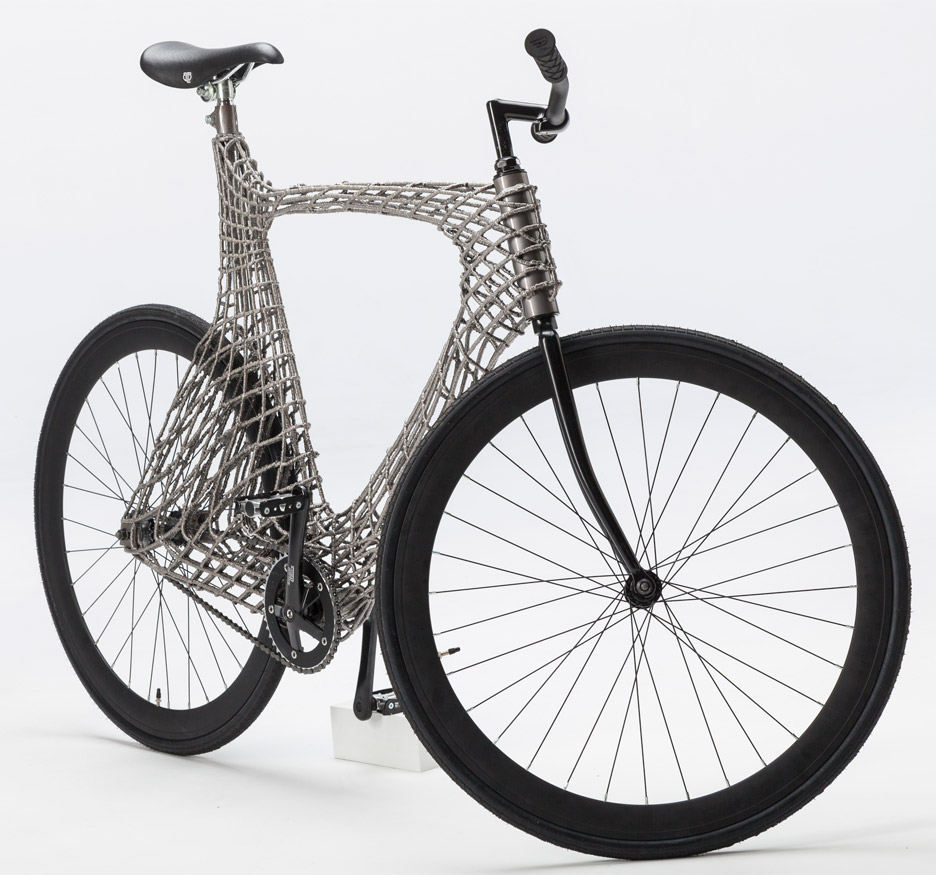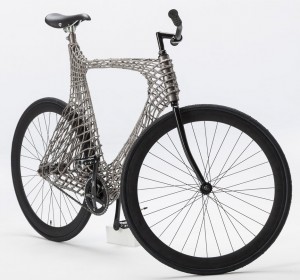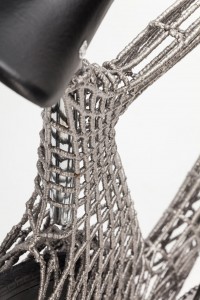Printing Steel in Mid-Air

Latest News
February 13, 2016
Students in The Netherlands have used a technology that combines MIG welding and 3D printing to create a steel-frame bicycle. The project is a prelude to an even more ambitious use of the technology: to print a small bridge in one piece.
The students at TU Delft teamed up with MX3D to print the stylish Arc Bicycle in steel. MX3D, a research study, will use the same technique to create a printed bridge over a canal in Amsterdam.
The bike was created as part of an Advanced Prototyping course at the university. MX3D was able to create the metal lattice using a robotic system that allows metals and resins to be printed in mid-air with no support structure. This wire arc additive manufacturing (WAAM) technique is based on MIG welding and uses multi-axis articulated robotic arms.
The bike project was launched in conjunction with AMS Building Fieldlab, a collaboration between MX3D, the unive rsity, and AMS/Amsterdam Institute for Advanced Metropolitan Solutions.
rsity, and AMS/Amsterdam Institute for Advanced Metropolitan Solutions.
“It was important for us to design a functional object that people use every day. Being students in the Netherlands, a bicycle naturally came to mind,” said team member Stef de Groot in an article in de zeen. “A bicycle frame is a good test for the technology because of the complex forces involved.”
MX3D was founded by designer Joris Laarman and Tim Geurtjens. The company plans to use the same technology to print an 8-meter bridge as a single piece, and then install it over a canal some time in 2017.
The bridge will serve as a research project conducted in collaboration with Autodesk and Heijmans, a construction company. According to Tim Geurtjens, CTO at MX3D:
“What distinguishes our technology from traditional 3D printing methods is that we work according to the ‘Printing Outside the box’ principle. By printing with 6-axis industrial robots, we are no longer limited to a square box in which everything happens. Printing a functional, life-size bridge is of course the ideal way to showcase the endless possibilities of this technique.”
You can see the robotic printer in action in the videos below.
Source: de zeen
Subscribe to our FREE magazine, FREE email newsletters or both!
Latest News
About the Author
Brian Albright is the editorial director of Digital Engineering. Contact him at [email protected].
Follow DE





